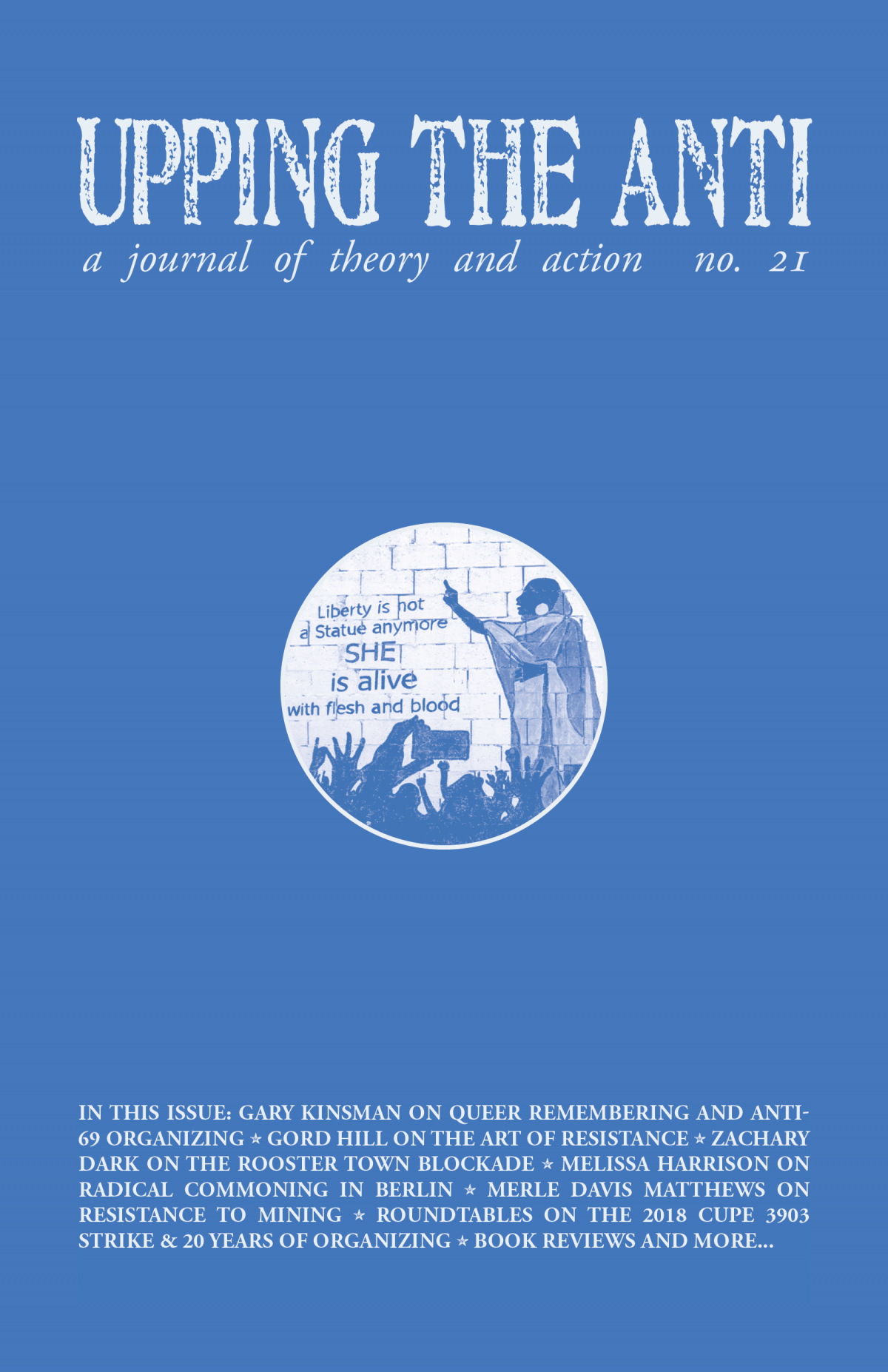Letter
Dear UTA,
Doug Ford said he’s “dead against” safe injection sites. In Alberta, Jason Kenney said, “helping addicts inject poison into their bodies is not a solution to the problem of addiction.” So it was great that Upping the Anti featured an interview with Ann Livingstone in it’s 20th issue, one of the activists who got safe injection sites off the ground in Vancouver during the first overdose crisis in the 1990s.
As harm reduction becomes institutionalized (though still underfunded, under-implemented, and precarious) activists remain marginalized. But if we aren’t there, we can’t push it forward or defend progress when it’s under attack. Ann sees drug user activists at the centre of the fight, not medical professionals or government agencies.
Back then, there were only unsafe injection sites. I used an empty apartment in my dealer’s building, a McDonald’s bathroom, or a squatted warehouse. The government wouldn’t open a supervised injection site or give us new syringes because they said it would only encourage more drug use.
I had the same syringe for an entire month. When it got dull, I sharpened it on a matchbook. Police would stop and search people, confiscating syringes and charging people for possession of drug paraphernalia. Needles were rare so people shared. Vancouver had the worst HIV transmission rates in the industrialized world.
But we didn’t wait for permission. People stole medical supplies, gave out new syringes, and opened up an underground safe injection site. These places saved lives no doubt. But they also built community; people came there seeking sanctuary from police. They exchanged information and organized. These tactics showed us how organized drug users could fight for our rights just like countless other marginalized communities have done throughout history.
Eventually, in 2003, officials permitted the opening of InSite, North America’s first legal and supervised injection site. But Conservatives never really stopped trying to shut it down. Prime Minister Stephen Harper fought it all the way to the Supreme Court of Canada. And Conservatives are ascendent in Canada again, trying to close existing facilities in Ontario and Alberta.
In the US, there are fights to open sites in San Francisco, New York, Seattle, Boston, and Philadelphia. But Trump’s Deputy Attorney General threatened anybody who tries: “Violations are punishable by up to 20 years in prison.”
Harper, Ford, Kenny, and Trump are all the same kind of guys. Their backlash brethren can be found everywhere: in cities and towns, among big developers, business improvement associations, homeowner groups, and in most political parties.
Activists already know that nothing ever comes by waiting for permission. People have been opening underground sites around the world for years.
I interviewed Ann for a recent episode of my podcast Crackdown. She said, “I challenge anyone in the world to show me a place that has an injection site, that didn’t have an illegal one first. That’s fine. Go ahead. Honestly. My mind is open. Only doing this for 25 years ... I might have overlooked a place!”
History proves it. In Ontario, Alberta, and anywhere else, we may need to break the law to save lives. Safe injection sites are necessary reforms: they are a form of triage. But organizing together and taking power into our own hands is revolutionary, and that shows us a path to ending the drug war.
In Solidarity,
Garth Mullins
Vancouver
You can check out Garth Mullins’ podcast Crackdown at crackdownpod.com

